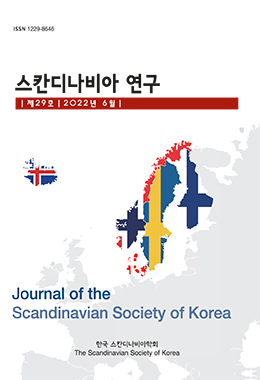A first glance Korean and Danish seem to be seemingly far apart each other in every linguistic aspect, from the grammar over pronunciation to the written language, not to mention the elaborated polite-conjugations we find in Korean compared to the Danes’ habit of saying ‘you’ (‘du’) to just about everyone. However, both languages have, from the latter half of the 20th century to nowadays, received an enormous amount of loan words from English-American. If we look in to that, going all the way back to the Viking era in Scandinavia, when it was the Vikings lending out to the English (knife, guest, gift), we even find some rare and astonishing connections between Korean and Danish. In this article we go on a walk about Seoul in South Korea, exploiting the city a as linguistic space, looking at stores, shops, cafes, billboards, signs, and more on, chasing Old Norse that has made it all the way from the Viking age, over England and USA to Asia and Korea.
한국어와 덴마크어는 언뜻 보기에는 서로 비슷한 점이 하나도 없는 것처럼 보인다. 언어학적인 측면에서 살펴봤을 때 발음과 문법에서부터 작문에 이르기까지는 말할 것도 없고, 덴마크에서는 상대방을 부를 때 ‘당신’이라고 말하는 것에 비하여 한국에서는 공손하게 존댓말로 말하는 것까지 모든 면에서 서로 많이 다른 언어인 것처럼 보인다. 그러나 이 두 언어는 모두 20세기 후반부터 오늘날까지 영미권으로부터 많은 양의 외래어를 받아 들였다.
바이킹들의 단어(knife, guest, gift 등)를 영어로 빌려준 스칸디나비아의 바이킹 시대로 거슬러 올라가 살펴보면 한국어와 덴마크어 사이에 희귀하고 놀라운 연관성을 발견할 수 있다. 이 글에서 우리는 대한민국의 서울을 언어학적인 공간으로 이용하면서 상점, 가게, 카페, 간판, 광고판 등을 살펴 보고 바이킹 시대부터 영국, 미국을 넘어 아시아, 한국까지 이르는 고대 스칸디나비아어를 찾아본다.


